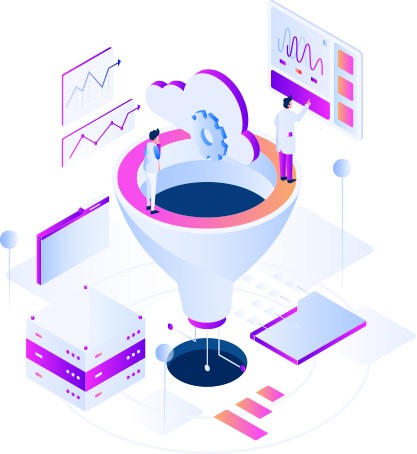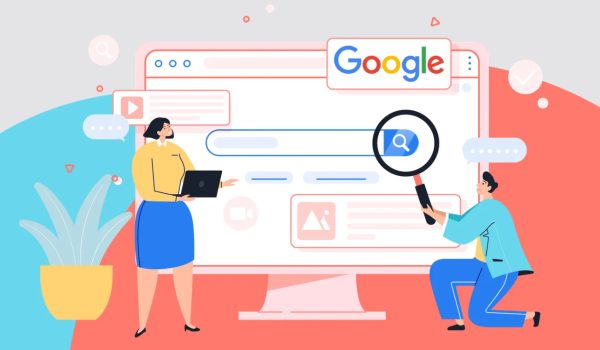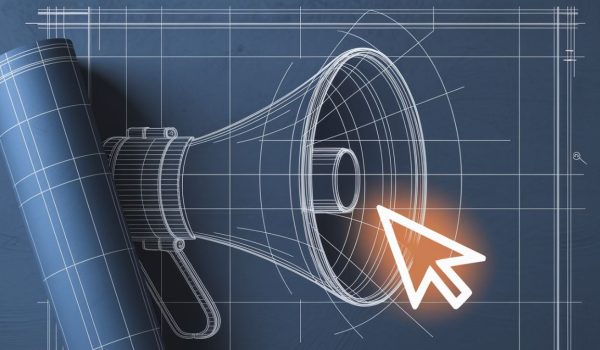
TL;DR: The SEO Funnel is a three-stage process that starts with awareness, then goes to evaluation, and finally conversion. The purpose of the funnel is to lead prospects down the path to conversion. To optimize your content for the SEO funnel, it should be written in line with the AIDA structure: Attention, Interest, Desire, Action.
It would make marketers’ lives much easier if prospects could always be won over after their first encounter with some branded content, but that’s just not how it works. Inbound marketing necessitates a longer process, but great SEO is crucial for accelerating it. Here’s what you should know about using the SEO funnel to get results.
A three-stage process
 Your ideal customer is online looking for the goods or services that you offer, SEO just makes it easier for them to find you. But when they do, they will require some convincing that what you have to offer really is the best choice. That requires demonstrating value and earning their trust before you really drive it home and push the sale.
Your ideal customer is online looking for the goods or services that you offer, SEO just makes it easier for them to find you. But when they do, they will require some convincing that what you have to offer really is the best choice. That requires demonstrating value and earning their trust before you really drive it home and push the sale.
The initial point of contact is what’s called the “awareness” stage, and that sits at the top of the SEO funnel, or ToF. Below that is the “evaluation” stage, which represents the middle of the funnel, or MoF, and then comes the conversion at the bottom of the funnel, or BoF.
That forms the basic structure of your funnel, designed to lead prospects on a journey down the path to conversion. To optimize your content for the SEO funnel, it should be written in line with the AIDA structure: Attention, Interest, Desire, Action. This will shape the tone and messaging of your content so that your ToF content is geared toward grabbing attention, your MoF content hooks a reader’s interest, and your BoF content nurtures their desire. Finally, to compel the follow-through action, you need a powerful call-to-action (CTA) with a button.
Why the SEO funnel works
Credibility is a vital commodity in the competitive digital space, and a brand that can establish it over its competition is sure to attract a following of loyal customers and even brand advocates. ToF content is all about building credibility, which can be quickly undermined by messaging that appears to be too pushy and salesy. ToF content should instead use subtlety to build the case for your brand’s superior offering, and that means you don’t always need to have a CTA linked to a product page.
ToF content can add value with useful information which your audience could potentially download and share with others, effectively doing your marketing for you. For complex products and services, especially in the B2B space, a degree of audience education may be necessary. This is where the seeds can be sown for the interest in your offering and the desire that follows.
Keywords are the primary levers with which to control your SEO efforts, and sound keyword research is crucial. Ranking for the right terms is about finding your niche, and your top-of-funnel content can do that while being helpful. Try answering frequently searched questions related to your offering and covering a topic comprehensively with content that Google defines as demonstrating expertise, authoritativeness, and trustworthiness (known as E.A.T.), based on over 200 ranking factors. Get it right and your site could earn a coveted number one spot on the search engine results pages (SERPs), which get 32% of the clicks, according to Backlinko.
Types of SEO funnel content
It’s essential to use content formats that fit the relevant stage in the funnel. Here are a few examples of the types of content you can deploy and where they fit.
ToF – landing pages, high-level blogs, how-to videos, infographics, podcasts, webinars
MoF – granular blogs, white papers, case studies, e-books, testimonials, FAQ page, product fact sheets
BoF – product/service brochures, email forms, product-oriented blogs, pricing page, comparison tools
How to measure your results
There are various metrics to measure to ensure your SEO efforts are getting the desired results, and the importance of each will vary according to your goals. Organic traffic is generally the most important and is measured by the number of page views. But check that your bounce rate isn’t too high, which would indicate that people aren’t sticking around, likely because they aren’t your target audience or because your content isn’t compelling enough.
Keyword rankings show your page’s position for specific keywords to reveal your competitiveness on those terms, while SERP ranking will tell you the share of the traffic received by a webpage from its rankings. The click-through rate is an important measure of your content’s effectiveness at driving conversions.
Over time, as your efforts continue to pay off and your content gains momentum, you’ll see an increase in page authority and ideally the number of backlinks to your content, which has the most impact on your rankings since it’s a clear demonstration of your content’s credibility.
Conclusion
For the guidance you need for SEO optimization or to get a tailored solution to your SEO requirements, the team at CODESM is at your service, so get in touch.





